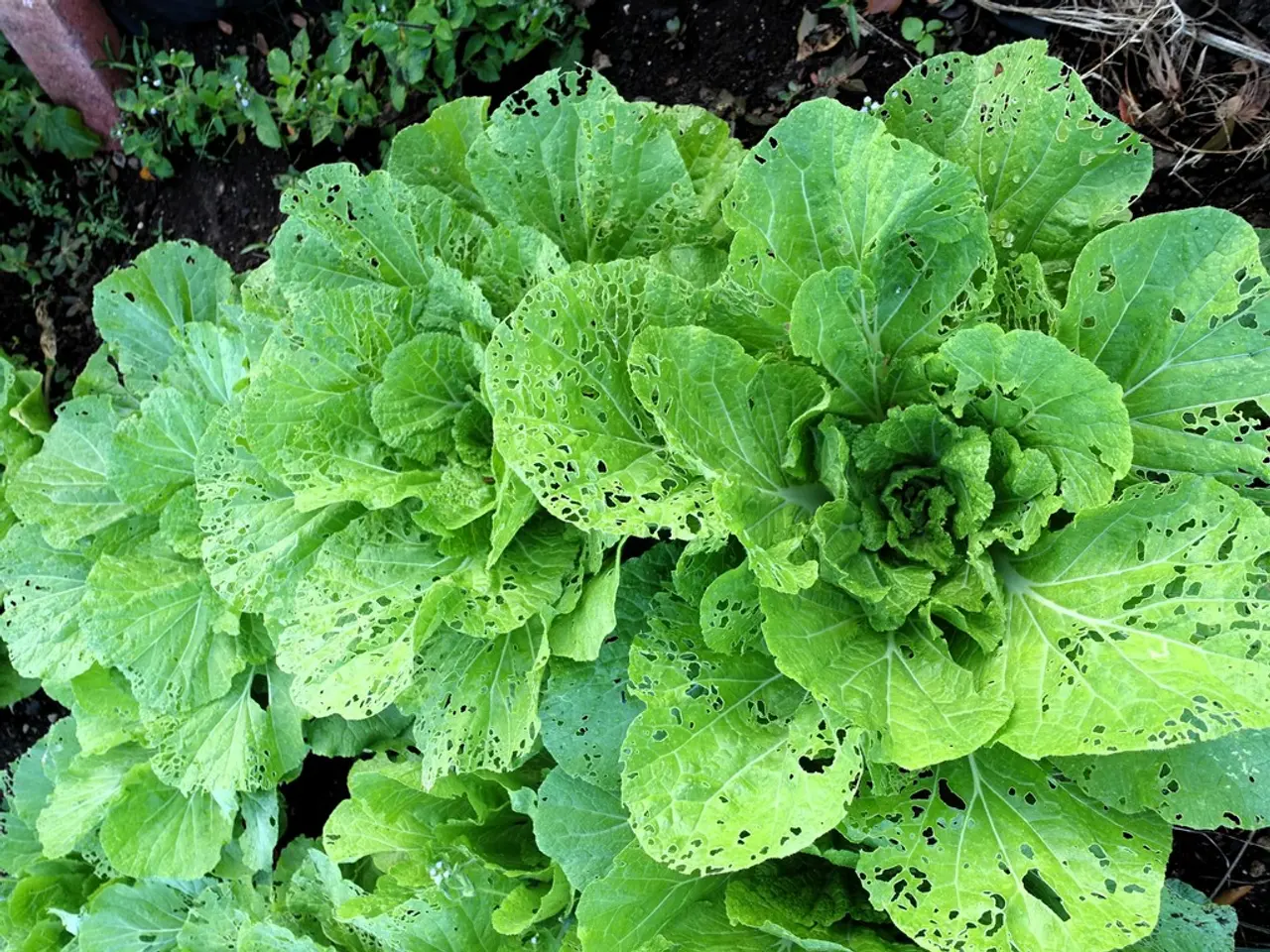Ideal Moments for Picking Spinach: Recommended Harvest Periods in Your Garden
Subtitle: Discover the secrets to a bountiful spinach harvest with our expert gardening tips.
Gardening enthusiasts, rejoice! This article will guide you through the process of growing and harvesting spinach, a versatile and nutritious leafy green. With its love for nutrient-rich, well-draining soil and cool weather, spinach is an ideal crop for both novice and experienced gardeners.
Soil and Compost
Spinach thrives in nitrogen-rich soil, so it's essential to mix compost into the soil before planting to enrich it. The ideal soil pH for spinach is between 6.5 and 7.0.
Moisture Management
Consistent moisture is key to growing healthy spinach. Use drip irrigation for best results, and water at soil level to prevent disease. Watering deeply once a week works well for many gardeners.
Planting and Germination
Sow spinach seeds 1/2 inch deep and space them about 2 inches apart. Planting several batches at different times can stagger the harvest, ensuring a supply of fresh spinach over a longer period.
Temperature
Spinach grows best in cool weather, thriving below 75°F (24°C). It is ideal for fall and winter gardens as higher temperatures cause bolting (premature seed development with bitter leaves) and slow growth.
Thinning and Spacing
Thin seedlings 10–15 days after sowing to maintain 15–20 cm spacing, which prevents overcrowding and promotes robust leaf growth.
Fertilization
Apply nitrogen-rich fertilizers split between basal at sowing and repeating every 15–20 days, or use organic compost/kitchen waste for home growing to encourage leafy growth.
Pest and Disease Control
Monitor your spinach plants regularly for signs of pests like aphids, leaf miners, and slugs. Natural predators like ladybugs can help control aphids, while row covers can be effective against leaf miners. Slugs can be dealt with using traps or organic slug bait.
Harvesting
Spinach is harvested when leaves are 2 to 3 inches long for baby spinach, and mature spinach leaves should be larger but tender. You can either pick-and-cut — snipping outer leaves while letting the plant continue growing — or full harvest by cutting the whole plant. Pick-and-cut allows multiple harvests from the same plants.
Post-Harvest Handling
Clean, sort, and cool the leaves immediately after harvest to maintain freshness.
Extending the Growing Season
Starting spinach indoors 2 months before the first frost and transplanting in late summer or early fall can extend your growing season and improve yield.
Varieties
Common types of spinach varieties include Savoy, Semi-Savoy, and Smooth-Leaf.
Storage
Spinach should be stored in the refrigerator in a perforated plastic bag in the vegetable crisper, keeping it fresh for about 10 days.
Preventing Bolting
To avoid bolting, spinach should be kept cool, with shade provided during hot days and consistent watering. In hotter climates, providing some shade during peak heat helps prevent bolting.
Enjoying Spinach
Spinach can be enjoyed raw in salads or smoothies, or cooked in various dishes like soups, stews, and casseroles.
Glen, an experienced gardener with over 15 years of hands-on experience in garden maintenance, design, and landscaping services, shares his expertise through a blog. His latest posts include tips on using garden fungicides, picking candy cane peppers, and picking watermelons.
Health Benefits and Disease Prevention
Spinach is packed with essential nutrients like iron, calcium, and vitamins A and C. To avoid diseases like downy mildew and white rust, practice crop rotation and choose disease-resistant varieties.
In conclusion, with the right care and attention, you can enjoy a bountiful spinach harvest. Happy gardening!
By incorporating spinach into your home-and-garden lifestyle, you'll not only transform your garden into a lush, nutritious haven but also enhance your lifestyle with its versatile and health-boosting properties. Whether you're a beginner or a seasoned gardener, the secrets to a successful spinach harvest lie in proper soil preparation, fertilization, and regular monitoring for pests and diseases.




